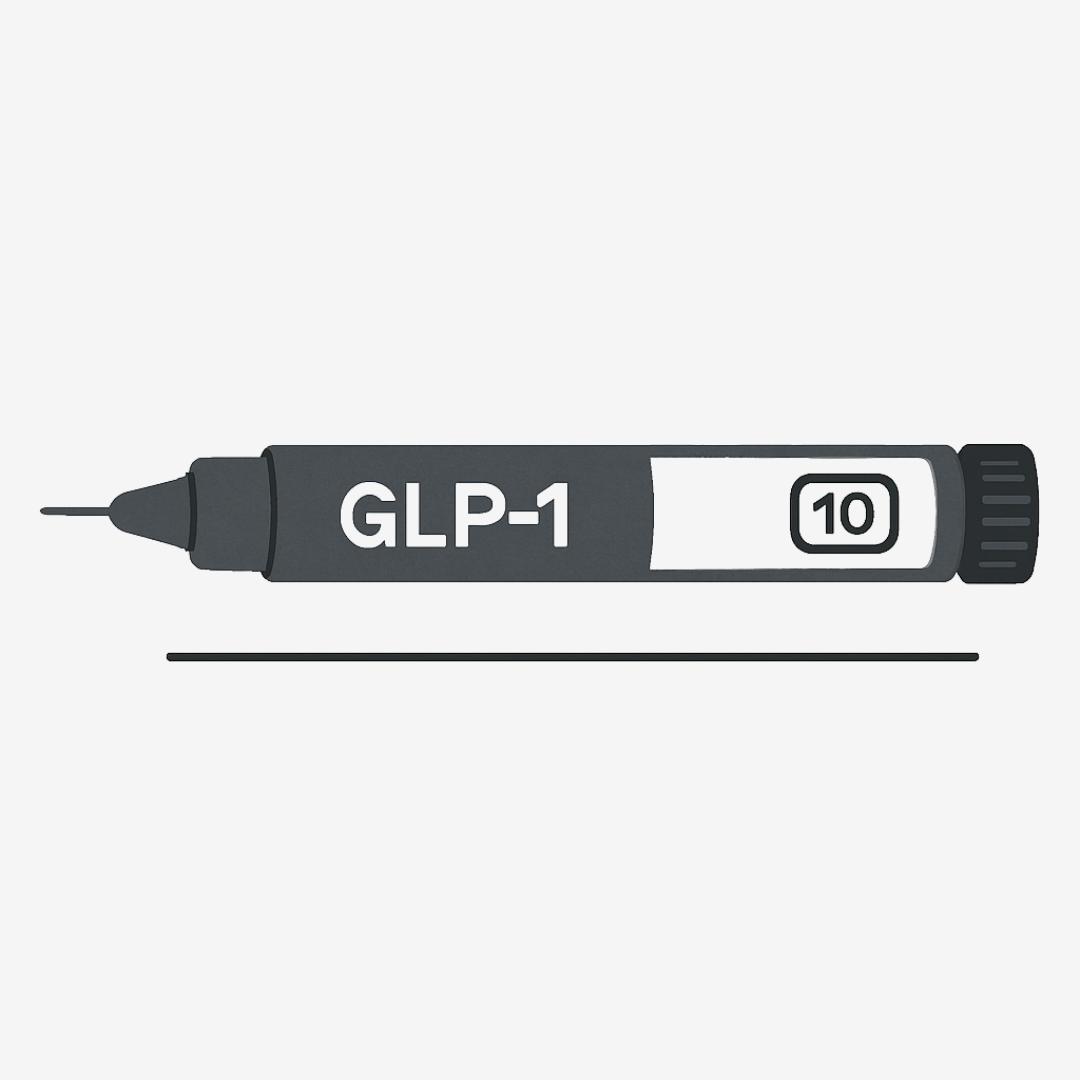Navigating GLP-1 Medications: What to Expect and How to Manage Side Effects

GLP-1 receptor agonists, such as semaglutide (Ozempic, Wegovy) and liraglutide (Saxenda, Victoza), are powerful tools for managing type 2 diabetes and supporting significant weight loss. By mimicking a natural gut hormone, they suppress appetite, slow down digestion, and help regulate blood sugar.
While these medications are transforming health outcomes for many, it's important to go into treatment with a clear understanding of the potential side effects. Most are manageable and temporary, but being prepared can make your experience much smoother.
This guide will walk you through what to expect, from the most common issues to rare but serious risks, and provide actionable strategies for managing them.
Why Do Side Effects Occur?
GLP-1 medications work primarily on your digestive system and brain. They slow down "gastric emptying," which means food stays in your stomach longer, helping you feel full. This very mechanism is often the primary driver of the most common side effects, especially as your body adjusts to the medication.
The standard approach to starting GLP-1s is "start low and go slow." Your doctor will begin with a low introductory dose and gradually increase it over weeks or months. This titration schedule is designed specifically to help your body adapt and minimize side effects. Most people find that side effects are most pronounced when they first start the medication or after a dose increase.
The Most Common Side Effects (And How to Manage Them)
Gastrointestinal (GI) issues are, by far, the most frequently reported side effects.
1. Nausea
This is the most common complaint, often described as a mild to moderate feeling of queasiness.
Management Strategies:
Eat Small, Frequent Meals: Instead of three large meals, try five or six smaller "mini-meals." This prevents your stomach from getting too full.
Choose Bland Foods: Especially during the first few weeks, stick to simple, low-fat foods like crackers, toast, rice, bananas, and brothy soups. Avoid greasy, spicy, or heavily processed foods.
Eat Slowly: Give your brain time to recognize that your stomach is full.
Stay Hydrated: Sip water or clear, sugar-free beverages throughout the day. Dehydration can worsen nausea.
Get Fresh Air: Sometimes, simply stepping outside for a moment can help ease a wave of nausea.
Try Ginger or Peppermint: Ginger tea, real ginger ale, or peppermint tea are classic remedies for an upset stomach.
2. Diarrhea
For some, the change in digestion can lead to loose, frequent stools.
Management Strategies:
Focus on Soluble Fiber: Foods like bananas, oatmeal, and applesauce can help add bulk to your stool.
Stay Hydrated with Electrolytes: If diarrhea is persistent, it's crucial to replenish lost fluids and electrolytes. Low-sugar sports drinks or electrolyte powders can be helpful.
Avoid Trigger Foods: Pay attention to whether high-fat foods, dairy, or artificial sweeteners are making symptoms worse.
Talk to Your Doctor: If diarrhea is severe or persistent, consult your healthcare provider.
3. Constipation
On the other end of the spectrum, slowed digestion can lead to constipation.
Management Strategies:
Increase Insoluble Fiber: Incorporate foods like whole grains, beans, leafy greens, and vegetables with skins on.
Drink Plenty of Water: Adequate hydration is essential to help fiber do its job and soften stool.
Stay Active: Gentle movement, like a daily walk, can help stimulate your bowels.
Consider a Supplement: If dietary changes aren't enough, talk to your doctor about trying a gentle over-the-counter fiber supplement (like psyllium husk) or a stool softener.
4. Fatigue
Feeling more tired than usual is another common side effect, often linked to the reduction in calorie intake. Ensure you're eating nutrient-dense foods, staying hydrated, and getting adequate rest as your body adjusts.
Rare But Serious Side Effects: When to Call Your Doctor Immediately
While the vast majority of side effects are mild and transient, there are rare but serious risks to be aware of. Seek immediate medical attention if you experience any of the following:
Severe Abdominal Pain: Especially if it's sharp, persistent, and radiates to your back, as this could be a sign of pancreatitis (inflammation of the pancreas).
Pain in Your Upper Right Abdomen, Fever, or Yellowing of the Skin/Eyes: These can be symptoms of gallbladder problems, such as gallstones.
Changes in Urination, Swelling in Legs or Ankles: These could indicate potential kidney problems.
Signs of a Severe Allergic Reaction: This includes swelling of the face, lips, or tongue, difficulty breathing, or a severe rash.
GLP-1 medications also carry a boxed warning from the FDA regarding a potential risk of thyroid C-cell tumors, based on animal studies. For this reason, these medications are not recommended for individuals with a personal or family history of medullary thyroid carcinoma or Multiple Endocrine Neoplasia syndrome type 2 (MEN 2).
The Bottom Line: Communicate with Your Doctor
The key to a successful experience with GLP-1 medications is open and honest communication with your healthcare provider.
Don't Suffer in Silence: If side effects are bothering you, let your doctor know. They may be able to adjust your dose, slow down your titration schedule, or offer other management strategies.
Be Patient: Give your body time to adjust. For most people, the initial side effects subside within a few weeks of starting the medication or increasing the dose.
See it as a Tool: Remember that GLP-1 medications are a powerful tool to be used alongside lifestyle changes. A balanced diet and regular physical activity will not only enhance the effectiveness of the medication but can also help mitigate some of its side effects.
By being informed and proactive, you can navigate the initial adjustment period and successfully integrate GLP-1 therapy into your journey toward better health.